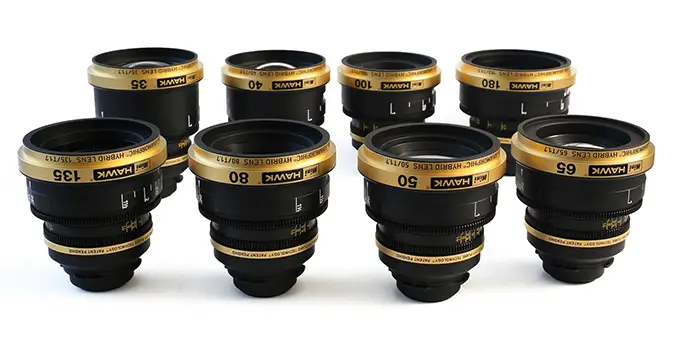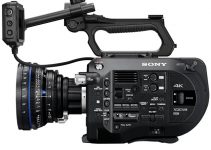Anamorphic imaging is known for its very distinct style and some specific optical effects that the lenses create. It’s this charm that makes them so loved.
Usually this does require a real anamorphic lens that is designed to squeeze a picture and then get de-squeezed in post to create the final product. However, Vantage with their MiniHawks is claiming to have a “hybrid” anamorphic lens set. What does that mean?
Well, the good folks at Anamorphic on a Budget had the same question. They got their hands on a set of MiniHawks and use a bunch of proof of performance footage to show them off.
Vantage has already made a name for itself with their optics. The Hawk “regular” anamorphic lenses are used on plenty of high-end productions. Vantage says that while these lenses are great, anamorphic lenses are not the easiest to use. The MiniHawks were introduced to fix those shortcomings.
MiniHawks definitely deliver on that promise by bringing a list of improvements to the table. They are compact, relatively fast, a super close focus distance, and they are well corrected for geometric distortion and breathing.
They are not traditional anamorphics with their optics. They are essentially spherical (aka normal) optics with an adjustable oval iris that can emulate the look and feel of anamorphic lenses.
Just looking at the MiniHawks alongside traditional anamorphics from Cooke you can see how much smaller they could make them.
Vantage did assume that users would want to use them in a similar fashion to anamorphics, so their printed focal lengths are actually anamorphic equivalents that take into account cropping to CinemaScope aspect ratio. For example, the 40mm (2x) option is closer to a 20mm spherical lens when you look at the full image.
Close focus is a huge advantage over super limited anamorphics. The 35, 40, 50, and 65mm lenses can get down to 10”, which is almost touching the front element. The 80, 100, and 135mm go up to 14” and then the 180mm hits 19”.
T1.7 is quite fast. And they are highly corrected so should provide a sharp picture even wide open.
All the lenses are designed as part of a matched set and look almost identical in size. There is less than an inch difference between the longest and shortest lens. Weight has some variations but the controls are set up to not give you any issues as you swap them out on set.

Image Credit: Vantage
Creating the anamorphic look are the irises mentioned earlier. They actually overlap to provide control over the final image. One is a standard 12-bladed spherical aperture as you would expect for controlling depth of field and light transmission.
The other is a two-bladed oval that creates the “hybrid” anamorphic look. This does cut down the light by almost two stops, which is why even though they are designed based on Vantage’s T1 lenses these MiniHawks max out at T1.7.
There is a lot of control with the oval iris and Vantage optimized each focal length. Being able to push so far can create a very visible anamorphic-like look, especially in the bokeh.
Another side benefit of being spherical lenses is that you can still capture a taller image. You’ll be able to do some reframing in post with that extra information.
You can also use this data to add some additional anamorphic image effects. One example is how these lenses are super well corrected for distortion you might want to add your own curvature to the edges to complete the anamorphic look.
Something you do lose with the MiniHawks are the distinctive streaks from flares. They just don’t happen here. You can add these in post or use a streak filter. Flares in general are well controlled. There is some fringing around strong light sources though.
What these lenses do is provide cinematographers and filmmakers with a lot more control over the final image. It’s interesting. Most filmmakers choose lenses specifically for their look.
The MiniHawks want to split the difference and give you the ability to get exactly what features you want (and get rid of the ones your don’t) with a combination of on set techniques and post production.
So what is a hybrid anamorphic lens? It’s essentially a spherical lens with oval rigs that has been perfectly tuned for anamorphic-like productions and editing. Unfortunately, Vantage has a patent on that iris tech and these types of lenses will remain in the rental-only world for most.
Did you find these lenses cool?
[source: Anamorphic on a Budget]
Disclaimer: As an Amazon Associate partner and participant in B&H and other affiliate programmes, we earn a small comission from each purchase made through the affiliate links listed above at no additional cost to you.


